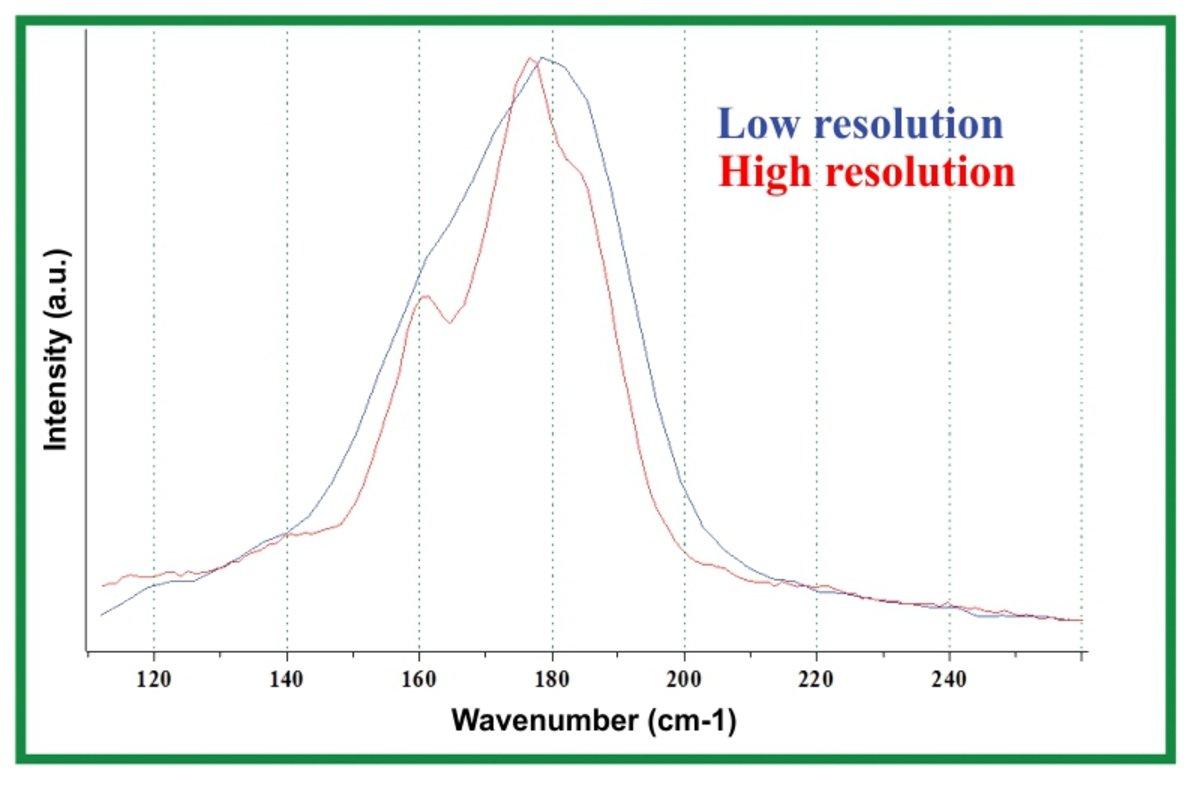

High Spectral Resolution is needed to separate very close modes in the spectrum of a single nanotube or in the spectrum of a bundle of nanotubes. Figure shows a RBM spectrum that represents tubes with at least 3 different properties.
Carbon nanotubes form a new class of materials that have attracted interest for a variety of engineering applications. Structurally they are related to graphitic carbon. One can conceptualise the structure of a single-walled carbon nanotube by imagining a single layer of graphite that is rolled into a tube.
The orientation of the graphite plane relative to the axis of the tube, as well as the diameter of the tube, will determine many physical properties; tubes can be insulating, semiconducting, or metallic. When multiple layers of graphite are rolled into a single tube, the resulting structure is called a multi-wall carbon nanotube.
Raman spectra of these tubes are quite interesting because of resonance phenomena and sensitivity to tube structure. That is, there is very strong excitation wavelength dependence of the spectra resulting from the electronic band structure. And features in the Raman spectra are diagnostic of the CNT type.
Raman Spectroscope - Automated Imaging Microscope
Confocal Raman Microscope
MicroRaman Spectrometer - Confocal Raman Microscope
Confocal Raman & High-Resolution Spectrometer
Do you have any questions or requests? Use this form to contact our specialists.
